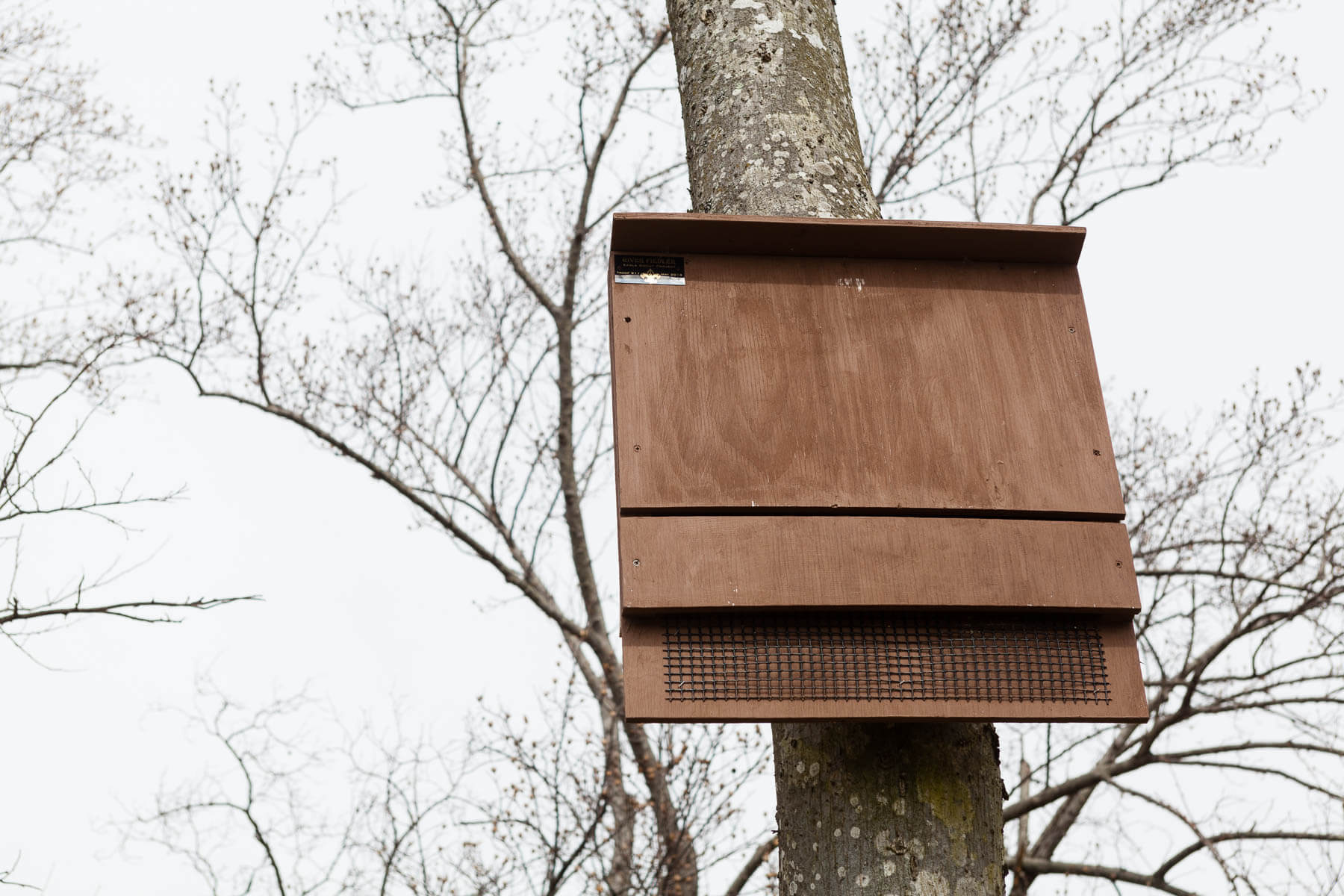Big appreciation for the little brown bat

Like many bat species across North America, the little brown bat has been hit hard in recent years by white-nose syndrome. The disease is caused by a cold-loving fungus that was likely introduced from caves in Europe, that only threatens hibernating species of the furry, flying mammals. Infected bats are forced to be more active while they are trying to conserve energy, causing them to burn through the fat reserves they need to survive long winters.
Since it was first discovered in New York in 2006, white-nose syndrome has killed millions of bats. Undeservedly feared, bats are important predators of invertebrates—serving a similar role as songbirds.
Last year, the little brown bat gained a group of allies clad in green sashes and vests. Upon learning of bats’ benefits, several Girl Scout troops proposed that the species be named the state mammal of the District of Columbia.
The D.C. Council is now weighing legislation to recognize the bat, and heard testimony in late January, including from 10-year-old Lydia Adcock, a Junior Girl Scout from Troop 44051. “I’m here to tell you that bats are cool,” Adcock said, as reported by WAMU.
Little brown bats can eat up to 1,200 insects an hour. And bats in general are incredibly important as pollinators and dispersers of seeds.
There was some discussion on the D.C. Council about whether to instead honor a different species, the big brown bat, which has also been affected by white-nose syndrome but has been more resistant. Big brown bats are also a species that can more readily adapt to human-made structures—including forming colonies inside homes—in the face of habitat loss. Little brown bats, on the other hand, haven’t been observed in the District for over 15 years.

Bringing back bat habitat
Though treatments are in development, there is no cure for white-nose syndrome, and it is firmly established in North America. To avoid spreading the fungus’ microscopic spores, cave visitors can carefully decontaminate clothes and gear between visits to caves used by bats.
Ryan Davis, manager of the Chesapeake Forests program for the Alliance for the Chesapeake Bay, outlines ways to support bats by increasing the amount of available habitat. Davis points out that all 15 species in the Chesapeake Bay watershed use forest habitat for breeding, foraging or shelter.
For example, efforts to plant riparian forest buffers can have a bat bonus, as the forest edge is often a great place for bats to shelter and feed. Dead trees, known as snags, support bats as well as other species like woodpeckers. And planting native plants can increase the number of beneficial insects that bats eat, while also supporting native pollinators like bees and butterflies.
Though legislation may eventually bring more awareness, one additional targeted way to support bats is to replace lost roosting habitat with a bat box.

Comments
There are no comments.
Thank you!
Your comment has been received. Before it can be published, the comment will be reviewed by our team to ensure it adheres with our rules of engagement.
Back to recent stories